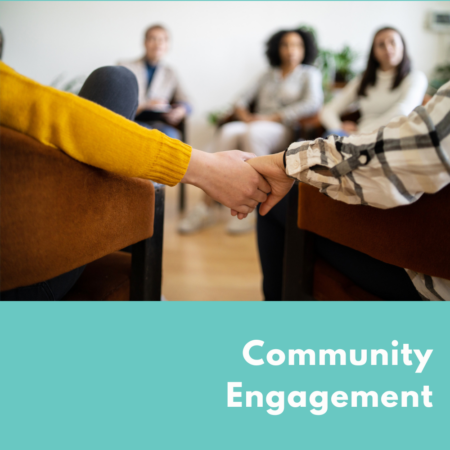

Community engagement refers to advocates working in the community to build lasting connections with the goal of engaging community members in supporting survivors’ safety, independence, and housing stability.
The more that someone is connected to their community, the more they are able to thrive. Advocates can support survivors in finding, creating, and reconnecting to resources on different levels that will make this stronger.
It is not always possible for domestic violence programs to have all the resources survivors need to become stable. Therefore, it is important that organizations make intentional efforts to establish and maintain relationships with other community resources.
Domestic Violence Housing First (DVHF) requires that advocates have access and knowledge of other community resources. Advocates need to be supported in carving out time to reach out to community partners and build relationships.
Learn more about community engagement at the video below.
Learn more from Futures Without Violence report, Preventing Family Violence: Community Engagement Makes the Difference
Review
Think about your staffing patterns and what may need to change to include housing search and support for survivors:
- Will advocates offer housing search and support? Can this be mobile advocacy?
- Will you consider hiring or working with a housing navigator?
- Will you collaborate with other organizations that have staff who provide housing search?
- What do conversations around community support sound like? Can this look different depending on the level of structure that the survivor is needing?
- How are resources currently created, maintained, and tracked?
- Use this spreadsheet as a living document to track resources
Discuss your community to get an idea of what resources already exist for survivors:
- Find out who is already providing housing/homeless services in your community so you can begin to collaborate.
- Offer to provide a training for housing/homeless services organizations. Use this training template to talk with your local housing/homeless providers on how they can support survivors of domestic violence. You can watch a presentation of this training template here.
- Locate the landlord association in you area. Look for, or help develop your own county Landlord Liaison Program. Review tips and tools for landlord outreach and education.
- Map resources in the community such as grocery stores, clinics, libraries, animal care, community centers, and parks. If folks are new to the area these will be important.
- Consider Participatory Asset Mapping. This process can be used in any size of community and can be helpful and creating a full picture of what is available as well as what may need to be further developed.
- Are there services that people ask for and don’t have access to?
- How accessible are these services and resources? Are there online communities/forums/classes that people could use?
We have found that to eliminate housing as a reason for survivors to stay in an abusive relationship, they need multiple options. This requires that advocates have access to a spectrum of housing options that meet a survivor’s unique needs.
Housing options include:
- Homelessness prevention (staying in their current homes)
- Rapid re-housing
- Subsidized housing
- Permanent supportive housing
Learn more about the benefits of community engagement in this video highlighting YWCA of Kitsap County:
Tools to use with survivors
Eco-mapping is a tool that can be used to visually track relationships and supports. It can be helpful for survivors to consider what their network currently looks like and what they would like for it to look like going forward.